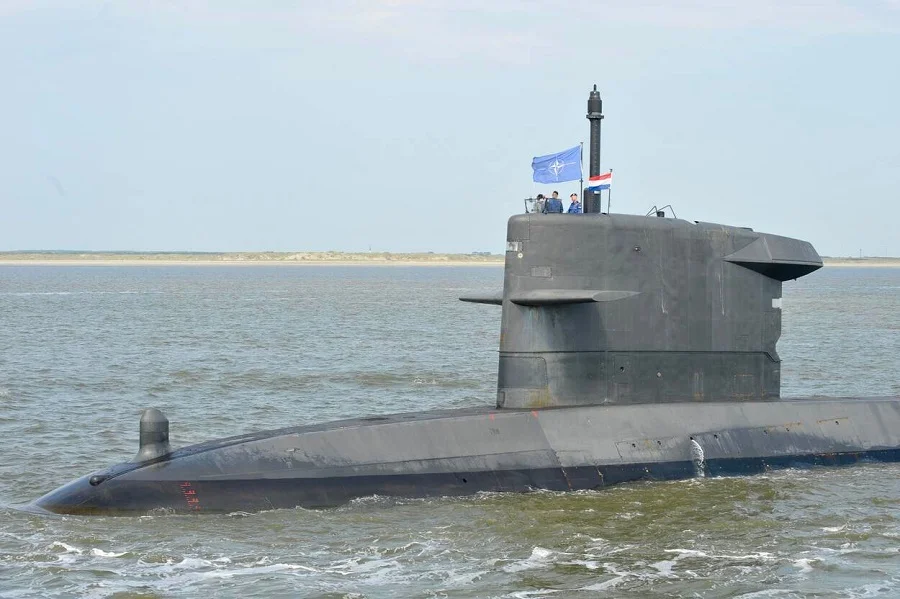The Walrus class attack submarine HNLMS Dolfijn completed a successful deployment operating under the Commander of NATO Submarines. During the deployment, the Royal Netherlands Navy submarine navigated through the Norwegian Sea and North Sea region on a mission aimed at deterrence and defence of the Euro-Atlantic area. Dolfijn is equipped with advanced sonar and communications systems, in order to carry out vigilance, patrol and reconnaissance missions. During this mission, Dolfijn was tasked with monitoring non-NATO military platforms, both surface and submarines, known to operate in this region. The diesel-electric attack submarine completed her deployment after nearly a month at sea supporting NATO operations.
“This was a successful deployment for HNLMS Dolfijn operating under the Commander of NATO Submarines to enhance maritime domain awareness and deterrence activities in the Northern Atlantic. Our ability to operate across the entire spectrum of the Euro-Atlantic region, in arduous and challenging conditions, underlines our commitment to supporting Allied operations,” said LtCdr Hans of the Royal Netherlands Navy, who commanded the submarine.

NATO’s submarine fleet significantly reinforces the Alliance’s strategic and tactical advantage while patrolling the Atlantic and High North, the Baltics and the Mediterranean Sea, and remains pivotal to the defence of the Alliance. The strength of NATO’s submarine force lies in multinational collaboration. NATO member states frequently conduct joint exercises and training missions to enhance interoperability and cohesion. Exercises such as Dynamic Mongoose and Dynamic Manta sharpen submarine capabilities, including hunting for vessels deployed by Russia and other nations. Dynamic Monarch, held every three years, enhances multinational cooperation between Allies, as they practice the complex location and rescue of distressed submarines. The core strength of NATO’s submarine fleet lies in its technological sophistication. Their submarines are equipped with advanced stealth capabilities, making them nearly undetectable to enemy forces.
The incorporation of nuclear propulsion in many NATO submarines, such as the US Navy’s Virginia Class, France’s Suffren Class and the Royal Navy’s Astute Class, give them the tactical edge. Because they can generate the vessel’s own air and water, they can operate underwater for extended periods, allowing for greater endurance and operational reach. As global security challenges evolve, member states continue to invest in submarine technology, providing NATO with an unparalleled advantage in maintaining maritime security and deterrence. Over the coming decade, The Royal Netherlands Navy will replace the current walrus class submarines with four Orka class submarines. These submarines will contain the latest innovations and state of the art technologies to be used in support of NATO operations, activities and exercises for many years to come.











